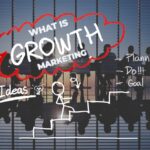
Boost Growth with Marketing Strategies
September 3, 2024
Analytics Effective Marketing Insights
September 11, 2024
In today’s competitive business landscape, attracting new clients is just the beginning. To truly thrive, it’s crucial to focus not only on acquiring prospects but also on turning them into loyal clients who will champion your brand. Thus, while client acquisition is essential, fostering loyalty can significantly boost your business’s growth and stability. Furthermore, loyal clients are more likely to make repeat purchases, refer others, and provide valuable feedback, creating a robust foundation for long-term success.
In this blog post, we’ll explore proven customer acquisition strategies that go beyond the initial sale. Specifically, we’ll delve into effective methods for attracting prospects, converting them into clients, and ensuring they remain engaged and satisfied over the long term. By implementing these strategies, you’ll be well on your way to building a dedicated client base that drives sustainable growth for your business.
Therefore, ready to transform your prospects into loyal clients? Let’s dive into the steps you need to take to make this happen.
Understanding Your Prospects
To effectively turn prospects into loyal clients, you first need a clear understanding of who your prospects are. Consequently, knowing your target audience is foundational to implementing successful customer acquisition strategies. Here’s how to get started:
Identify Your Ideal Client Profile
The first step in understanding your prospects is to define your ideal client profile. This involves outlining the characteristics that make up your most valuable clients. For example, consider factors such as industry, company size, job roles, and even specific pain points that your products or services address. By identifying these traits, you can tailor your customer acquisition strategies to attract prospects who closely match this profile.
Why is this important? By focusing on prospects who fit your ideal client profile, you increase the likelihood of converting them into loyal clients. Moreover, understanding your ideal client helps you craft more targeted marketing messages and offers that resonate with your audience.
Conduct Market Research
Once you have a clear profile of your ideal client, the next step is to conduct thorough market research. This research will provide deeper insights into the needs, preferences, and behaviors of your prospects. Consequently, there are several methods to gather this information:
- Surveys and Questionnaires: Create surveys to directly ask prospects about their challenges and needs. These can be distributed via email or social media.
- Interviews: Conduct one-on-one interviews with a sample of your target audience to gain qualitative insights.
- Analytics: Use data from your website, social media, and CRM systems to identify patterns in prospect behavior and preferences.
Why is market research essential? It allows you to refine your customer acquisition strategies by providing actionable data about what your prospects truly value. As a result, this helps you tailor your approach to better meet their needs and increase your chances of conversion.
Crafting an Effective Acquisition Strategy
Once you have a solid understanding of your prospects, the next crucial step is to develop and implement effective customer acquisition strategies. Specifically, crafting an acquisition strategy involves several key elements designed to attract and convert prospects into clients. Here’s how you can approach it:
Build a Strong Value Proposition
The cornerstone of successful customer acquisition strategies is a compelling value proposition. Essentially, this is a clear statement that outlines the unique benefits and advantages of your product or service. To build a strong value proposition, consider the following:
- Identify Unique Selling Points: What sets your offering apart from competitors? By highlighting these differentiators in your messaging, you make it easier for prospects to see why they should choose you.
- Address Pain Points: Ensure that your value proposition directly addresses the key challenges or needs of your target audience. This approach makes your offering more relevant and appealing.
- Communicate Clearly: Your value proposition should be straightforward and easily understood by your prospects. Consequently, this clarity enhances the effectiveness of your customer acquisition strategies and improves conversion rates.
Why is this important? A well-crafted value proposition helps prospects quickly grasp why they should choose your product or service over others. As a result, it enhances the effectiveness of your customer acquisition strategies and improves overall conversion rates.
Optimize Your Sales Funnel
An optimized sales funnel is crucial for turning prospects into clients. In particular, the sales funnel represents the journey prospects go through from their first interaction with your brand to becoming a paying client. To optimize this funnel, follow these steps:
- Streamline the Process: Make sure each stage of the funnel—from awareness to decision—is clear and easy for prospects to navigate. This clarity reduces barriers to conversion.
- Clear Calls-to-Action: Use strong, clear calls-to-action (CTAs) at each stage to guide prospects toward the next step. Therefore, these CTAs help maintain momentum throughout the funnel.
- Lead Nurturing: Implement strategies such as follow-up emails and targeted content to nurture leads and keep them engaged throughout their journey. Consequently, this ongoing engagement increases the likelihood of conversion.
Why is this important? An optimized sales funnel reduces friction in the buying process, making it easier for prospects to convert into clients. By refining each stage, you enhance the efficiency of your customer acquisition strategies and improve overall conversion rates.
Leverage Content Marketing
Content marketing is a powerful tool in your customer acquisition strategies. By providing valuable, relevant content, you can attract and engage prospects, building trust and authority in your field. Here’s how to leverage content marketing effectively:
- Create Valuable Content: Produce content that addresses the needs and interests of your target audience. For example, this could include blog posts, ebooks, infographics, and videos.
- Distribute Strategically: Share your content through channels where your prospects are most active, such as social media, email newsletters, and industry forums. Thus, you ensure that your content reaches the right audience.
- Engage and Interact: Encourage interaction by asking questions, inviting comments, and providing responses to engage your audience further. Consequently, this interaction builds a stronger connection with your prospects.
Why is this important? Content marketing helps you establish your brand as a trusted resource, which can attract and retain prospects. Consequently, it plays a crucial role in effective customer acquisition strategies by nurturing leads and guiding them toward conversion.
Converting Prospects into Clients
Turning prospects into clients involves more than just attracting their interest; it requires a strategic approach to nurture and guide them through the decision-making process. Therefore, effective customer acquisition strategies focus on converting prospects into committed clients by addressing their needs and creating a positive experience. Here’s how you can achieve this:
Personalize Your Approach
Personalization is key to converting prospects into clients. Specifically, tailoring your approach to each prospect helps build a connection and demonstrates that you understand their unique needs. Here’s how to personalize effectively:
- Segment Your Audience: Use data to segment your prospects based on factors such as industry, behavior, and pain points. Consequently, this allows you to create targeted messaging that resonates with each group.
- Customize Communication: Address prospects by name and reference their specific challenges or interests in your communications. By doing this, you show that you’re attentive and responsive to their needs.
- Offer Personalized Solutions: Provide solutions or product recommendations that align with their specific requirements. As a result, this approach helps prospects see the value in your offering and how it directly benefits them.
Why is this important? Personalization makes your interactions more relevant and engaging for prospects, thereby increasing the likelihood of conversion. Consequently, it enhances the effectiveness of your customer acquisition strategies and fosters a stronger connection with potential clients.
Offer Exceptional Onboarding
Once a prospect becomes a client, the onboarding process is crucial in setting the stage for a positive long-term relationship. In particular, an exceptional onboarding experience ensures that clients feel valued and supported from the start. Here’s how to deliver a top-notch onboarding process:
- Welcome Communication: Send a warm welcome message that outlines what clients can expect and provides them with essential information. This initial contact, therefore, sets a positive tone for the relationship.
- Provide Clear Instructions: Offer clear and concise instructions on how to get started with your product or service. By doing this, you help clients feel confident and reduce any confusion.
- Assign a Dedicated Point of Contact: Provide clients with a dedicated account manager or support contact who can assist them with any questions or issues. Consequently, this personal touch demonstrates your commitment to their success.
Why is this important? Exceptional onboarding helps clients quickly realize the value of your offering and sets the foundation for a long-term relationship. As a result, it plays a crucial role in effective customer acquisition strategies by ensuring a smooth transition from prospect to client.
Address Pain Points Promptly
Addressing pain points promptly is essential for maintaining client satisfaction and trust. When clients encounter issues or have concerns, responding quickly and effectively demonstrates your commitment to their success. Here’s how to handle pain points:
- Monitor Feedback: Regularly solicit feedback from clients to identify any emerging issues or concerns. This proactive approach, therefore, helps you address problems before they escalate.
- Respond Quickly: When clients reach out with concerns, respond in a timely manner with solutions or updates. Quick responses show that you value their time and are dedicated to resolving their issues.
- Provide Solutions: Offer practical solutions or alternatives that address the specific problems clients are facing. By doing so, you enhance their experience and reinforce their decision to choose your brand.
Why is this important? Promptly addressing pain points helps maintain client satisfaction and prevents negative experiences from affecting the relationship. Consequently, it strengthens your customer acquisition strategies by demonstrating reliability and responsiveness.
Cultivating Client Loyalty
Once you’ve successfully converted prospects into clients, the next vital step is to focus on cultivating their loyalty. Therefore, building and maintaining strong client relationships is crucial for long-term success and can significantly impact your business growth. Effective customer acquisition strategies extend beyond just making a sale; they involve ongoing efforts to keep clients engaged and satisfied. Here’s how you can foster client loyalty:
Provide Ongoing Value
To keep clients engaged, it’s essential to provide ongoing value beyond the initial purchase. Consequently, continually offering value helps maintain their interest and encourages long-term loyalty. Here’s how you can do it:
- Regular Updates: Keep clients informed about new features, updates, or enhancements to your products or services. By doing this, you demonstrate that you’re continually improving and investing in their success.
- Exclusive Offers: Provide exclusive offers or benefits to your existing clients. For example, this could include discounts, early access to new products, or special promotions that make them feel valued.
- Educational Content: Share valuable educational content that helps clients get the most out of your product or service. This might include webinars, tutorials, or how-to guides.
Why is this important? Providing ongoing value helps to keep clients engaged and demonstrates your commitment to their success. As a result, it strengthens your customer acquisition strategies by reinforcing the benefits of maintaining a relationship with your brand.
Foster Strong Relationships
Building strong relationships with your clients is key to enhancing loyalty and retention. Here’s how you can foster these important connections:
- Personal Touch: Regularly check in with clients through personalized messages or calls. This personal touch, therefore, shows that you care about their individual needs and are invested in their success.
- Client Appreciation: Show appreciation through thank-you notes, client appreciation events, or personalized gifts. Such gestures, in turn, reinforce the value you place on their business.
- Solicit Feedback: Encourage and actively seek feedback from clients to understand their experiences and preferences. By acting on their feedback, you demonstrate that their opinions are valued and that you’re committed to continuous improvement.
Why is this important? Strong relationships foster trust and loyalty, making clients more likely to stay with your brand and recommend it to others. Consequently, these efforts are crucial components of effective customer acquisition strategies and contribute to long-term business success.
Implement a Feedback Loop
An effective feedback loop is essential for understanding client satisfaction and improving your services. By actively seeking and acting on client feedback, you can enhance their experience and address any issues promptly. Here’s how to implement a feedback loop:
- Collect Feedback: Use surveys, feedback forms, and direct communication to gather insights from clients about their experiences and needs. This approach, therefore, ensures that you’re capturing a broad range of opinions.
- Analyze Data: Regularly analyze the feedback to identify trends and areas for improvement. Consequently, this helps you make informed decisions and prioritize changes that will benefit your clients.
- Act on Feedback: Implement changes based on the feedback received and communicate these improvements to your clients. This demonstrates that you value their input and are dedicated to making positive changes.
Why is this important? A robust feedback loop helps you stay attuned to client needs and continuously improve your offerings. As a result, it plays a vital role in your customer acquisition strategies by enhancing client satisfaction and fostering loyalty.
Measuring and Analyzing Success
To ensure that your customer acquisition strategies are effective, it’s crucial to measure and analyze their success. Therefore, by tracking key metrics and assessing performance, you can identify what’s working well and where improvements are needed. This continuous evaluation, consequently, helps you refine your strategies and achieve better results over time. Here’s how to measure and analyze success effectively:
Define Key Metrics
The first step in measuring success is to define the key metrics that are relevant to your customer acquisition strategies. By doing so, you will be able to gauge the effectiveness of your efforts and track progress. Consider the following:
- Conversion Rate: Measure the percentage of prospects who become clients. Specifically, this metric provides insight into how well your acquisition strategies are converting leads into customers.
- Customer Acquisition Cost (CAC): Calculate the total cost of acquiring a new client, including marketing and sales expenses. Understanding CAC, therefore, helps you assess the efficiency of your spending.
- Lifetime Value (LTV): Determine the total revenue you can expect from a client over their entire relationship with your business. By comparing LTV with CAC, you can evaluate the long-term value of your acquisition efforts.
Why is this important? Defining and tracking key metrics allows you to understand the effectiveness of your customer acquisition strategies. Consequently, this helps you make data-driven decisions and optimize your approach for better results.
Analyze Performance Data
Once you have defined your key metrics, the next step is to analyze performance data to gain insights into how well your strategies are working. Here’s how you can do this effectively:
- Regular Reporting: Create regular reports to track your key metrics over time. These reports should include trends, patterns, and any notable changes in performance.
- Compare Against Benchmarks: Evaluate your performance data against industry benchmarks or historical data to see how you stack up. This comparison, therefore, helps you identify areas for improvement.
- Identify Strengths and Weaknesses: Look for patterns that indicate what’s working well and what’s not. For instance, if a particular channel is driving higher conversions, focus more resources there.
Why is this important? Analyzing performance data provides valuable insights into the effectiveness of your customer acquisition strategies. As a result, this helps you identify successful tactics and areas that need adjustment.
Adjust Strategies Based on Insights
After analyzing your performance data, it’s essential to adjust your strategies based on the insights you’ve gained. Here’s how to make effective adjustments:
- Refine Targeting: If you find that certain segments are more responsive than others, adjust your targeting strategies to focus on these high-performing segments. Consequently, this will help you improve your results.
- Optimize Campaigns: Based on performance data, tweak your marketing campaigns to improve their effectiveness. For example, adjust messaging, change creative elements, or modify your channels.
- Reallocate Resources: Shift resources to strategies and channels that are yielding the best results. Therefore, this ensures that your efforts are concentrated where they have the most impact.
Why is this important? Adjusting your strategies based on insights ensures that you’re continuously improving and optimizing your approach. As a result, this helps enhance the overall effectiveness of your customer acquisition strategies.
Leveraging Technology for Efficiency
In today’s fast-paced business environment, leveraging technology is essential for enhancing the efficiency of your customer acquisition strategies. Therefore, technology not only streamlines processes but also provides valuable insights that can significantly improve your approach. Here’s how you can use technology to optimize your acquisition efforts:
Utilize CRM Systems
Customer Relationship Management (CRM) systems are invaluable tools for managing and analyzing customer interactions. By leveraging CRM technology, you can enhance various aspects of your customer acquisition strategies. Specifically, here’s how:
- Track Interactions: Use CRM systems to monitor all interactions with prospects and clients. This tracking, consequently, helps you understand their behavior and preferences, allowing for more personalized communication.
- Automate Follow-Ups: Implement automation features to send follow-up emails or reminders based on specific triggers. For example, this ensures timely communication and nurtures leads more effectively.
- Analyze Data: Utilize CRM analytics to gain insights into your acquisition processes. By analyzing this data, you can identify trends and adjust your strategies accordingly.
Why is this important? CRM systems streamline the management of client interactions and automate routine tasks, thereby increasing efficiency. Consequently, this enables you to focus more on strategy and less on administrative tasks, enhancing the effectiveness of your customer acquisition strategies.
Leverage Marketing Automation
Marketing automation tools are crucial for scaling your customer acquisition strategies while maintaining a personal touch. Therefore, here’s how to effectively use marketing automation:
- Segment Your Audience: Use automation tools to segment your audience based on various criteria such as behavior, demographics, or engagement level. This segmentation, therefore, allows for more targeted and relevant marketing efforts.
- Personalize Campaigns: Create automated, personalized marketing campaigns that cater to the specific needs and interests of your prospects. For instance, automated email sequences can be tailored to different stages of the buyer’s journey.
- Measure Performance: Monitor the performance of automated campaigns through detailed analytics. By analyzing these metrics, you can fine-tune your campaigns to improve engagement and conversion rates.
Why is this important? Marketing automation helps you efficiently manage and scale your campaigns while delivering personalized content to your audience. As a result, this enhances the effectiveness of your customer acquisition strategies and improves overall engagement.
Implement Data Analytics
Data analytics plays a crucial role in refining and optimizing your customer acquisition strategies. By implementing data analytics tools, you can gain deep insights into various aspects of your acquisition efforts. Specifically, here’s how to leverage data analytics:
- Track Key Metrics: Use analytics tools to track key metrics such as conversion rates, customer acquisition cost (CAC), and lifetime value (LTV). Monitoring these metrics helps you understand what drives success and what needs improvement.
- Predict Trends: Analyze historical data to identify trends and predict future behaviors. For instance, predictive analytics can help you anticipate which prospects are most likely to convert.
- Optimize Strategies: Utilize data-driven insights to refine your acquisition strategies. By making informed decisions based on analytics, you can continuously improve your approach and achieve better results.
Why is this important? Data analytics provides valuable insights that help you understand and optimize your customer acquisition strategies. Consequently, this enables you to make informed decisions and enhance the overall effectiveness of your efforts.






1 Comment
[…] from the start. And once a site is live and running, it’s just as important to focus on also turning prospects into loyal clients through smart engagement and conversion […]